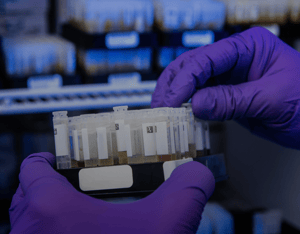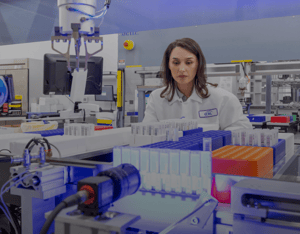.png?width=300&name=crl_purple_dots_bg_med%20(2).png)
Bacteriology Specimen Collection
CRL offers a comprehensive test menu ranging from routine laboratory services to the latest in molecular testing. We continually advance our test menu, provide customizations, and hold ourselves to the highest of quality and support standards, uniquely positioning our partners to achieve the best possible outcomes.
- Step 01
- Step 02
- Step 03
Step 1 - Collection of Specimens for Culture: General Information
Appropriate information is critical to proper processing of test requests. Although pertinent clinical information is highly desirable, if it is not available, please provide at least the following information
- Patient’s name and second unique patient identifier
- Source of specimen or collection site
- Date
- Specimen
- Test desired
Step 2 - Obtain Specimen Correctly
- Explain completely to the patient.
- Use a sterile container
- Label correctly and send the specimen to the laboratory promptly
- Avoid contamination of the container
Step 3 - Timing of Collection
- Sputum, urine, stool, etc. are best collected in early morning and sent to the laboratory the same day.
- Blood.
- A blood culture requires two bottles of blood — one for aerobic and one for anaerobic culture. Each blood culture should be collected from a separate venipuncture.
- Collect blood specimens before treatment is initiated, if possible.
- Collect two or three sets early in the illness; repeat if they are negative after 48 hours of growth.
- Organisms are continuously shed during intravascular infections, such as endocarditis, but they are intermittently shed during occult infections. In some instances of occult infection, there is a predictable fever pattern. If this is the case, the blood for culture is best collected 30 minutes prior to the fever spike.
- The yield beyond three or four cultures is minimal in most circumstances, and collection of more than this is discouraged.
Procedure for Specific Specimen Collection
Upper Respiratory Tract
This section describes procedures for obtaining culture specimens from the nasopharyngeal area and the throat.
- A nasopharyngeal culture is obtained by inserting a thin sterile swab gently through the nose to touch the pharynx; gently rotate and remove.
- A throat culture is obtained by introducing a sterile swab into the mouth. Use a tongue blade to avoid contaminating the specimen with oral secretions. Firmly swab both tonsilar fossae, posterior pharynx, and any inflamed or ulcerated areas.
Lower Respiratory Tract Sputum
This section discusses sputum cultures, including such alternatives as induced sputum, tracheal aspiration, and bronchial washings.
- Rinsing the mouth with saline or water (but not mouthwash) may reduce contamination with normal oropharyngeal flora.
- Encourage deep cough with expectoration of the sputum into a sterile specimen collection cup that is labeled with the patient’s name and second patient identifier.
- Do not send saliva (spit) for culture.
- When the patient is unable to cough productively, notify the physician. An alternative method may be ordered, such as:
- Induced Sputum. This is done by a respiratory therapist on the orders of the physician. Involuntary deep coughing is induced by irritation.
- Tracheal Aspiration. The trachea is gently irritated with a small lumen suction catheter, which causes deep, productive coughing. Also, the specimen may be aspirated with a syringe.
- Bronchial Washings. These are done by the physician in the operating room at the time of bronchoscopic examination.
- A small amount of sputum is all that is required, but it must be sputum and not oral secretions.
Specimens of Wound Exudate
Follow these steps for using a sterile transport swab in collecting wound exudate specimens.
- Gently cleanse the area, using dry, sterile gauze to remove any contaminants.
- Using a sterile red-stopper swab culture collection system, introduce deeply enough to obtain a moist specimen; replace the swab in the container. Do not break the container.
- Store at room temperature.
Stool for Culture
When collecting stool specimens, follow these guidelines.
- A small amount is all that is required, about the size of a walnut. If several different types of cultures are requested, submit a walnut-sized sample for each. Place the specimen in transport medium or in a sterile leakproof container.
- When stool cultures are not readily obtainable, rectal swabs are acceptable; however, it must be indicated whether the specimen is a stool or a rectal swab.
Use of Sterile Swab (Red-Stopper) Collection Kit
The swab system is guaranteed sterile until the seal is broken. Directions for use:
- Peel open and remove the swab from the package.
- Remove the cap/swab stick from the tube.
- Collect the appropriate specimen and put the cap/swab into the tube. Push the cap to bring the swab into contact with the transport medium.
- Print the patient’s name, second patient identifier and the culture site on the specimen tube.
- Place the specimen in a zip-lock bag and put the completed test request form in the side pouch
- Store it at room temperature.
- Send specimen to the laboratory





